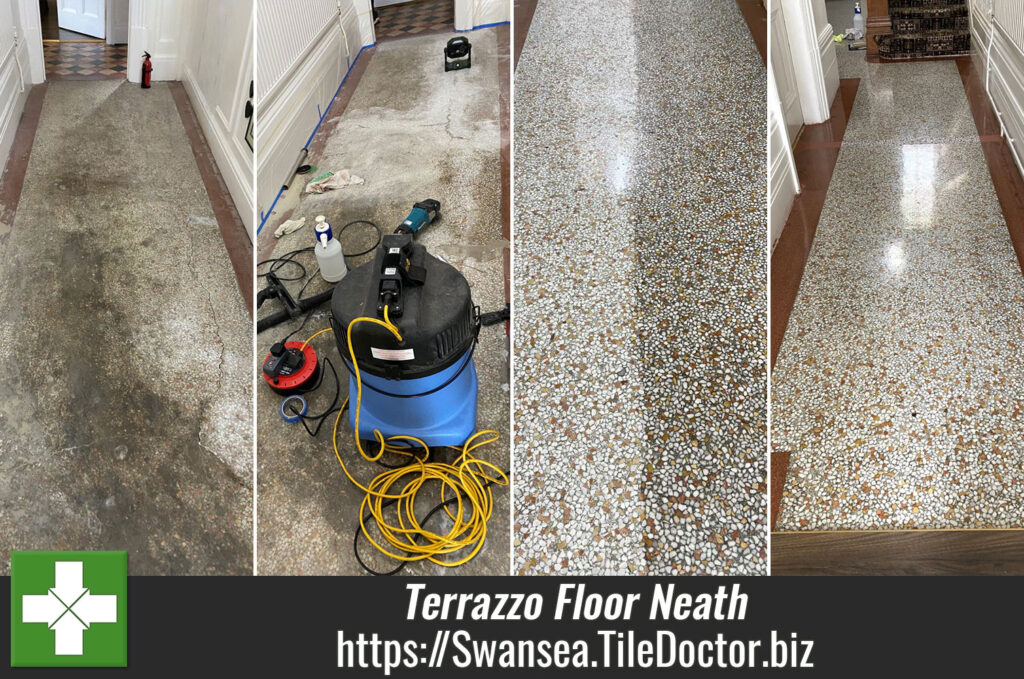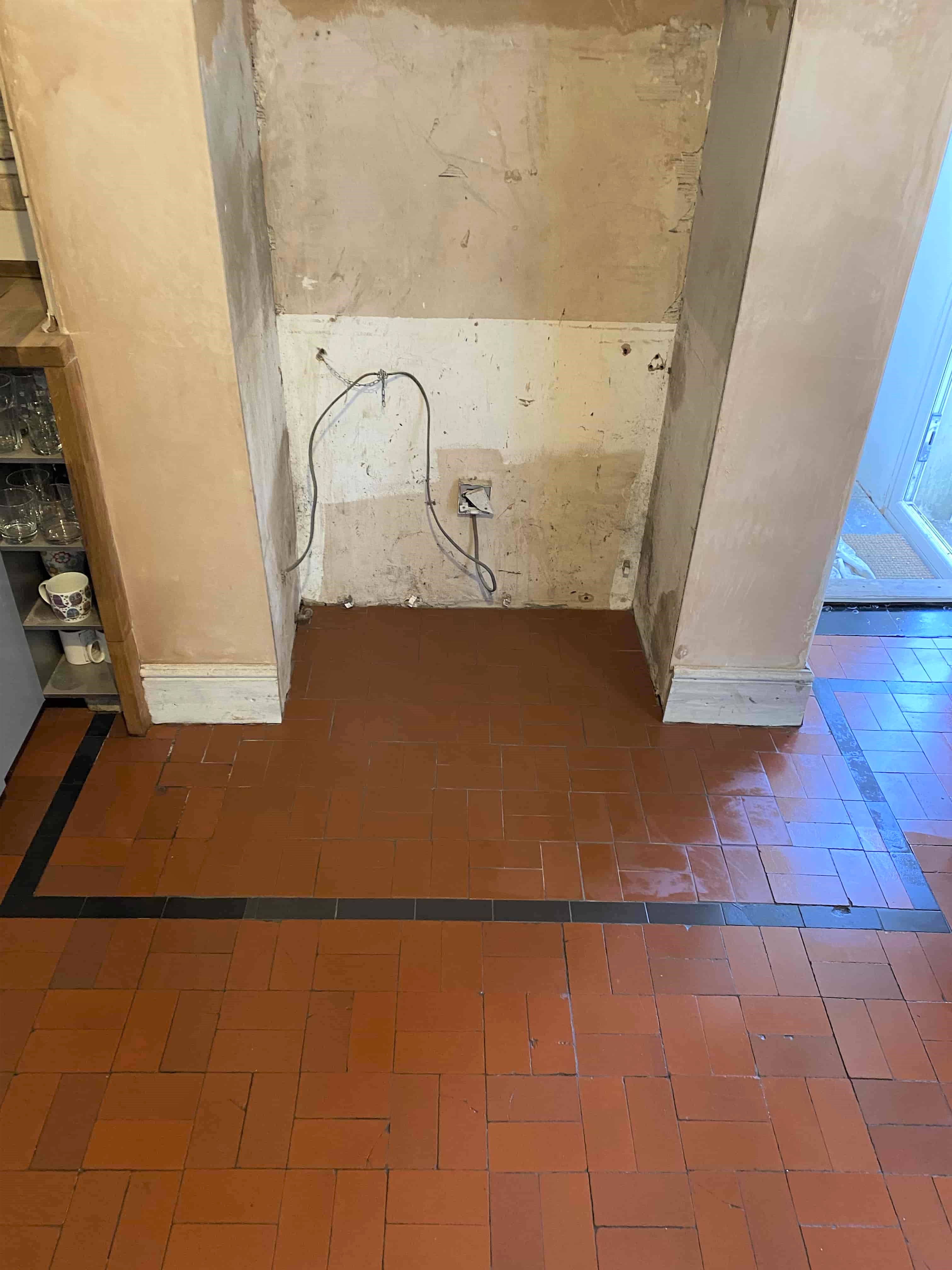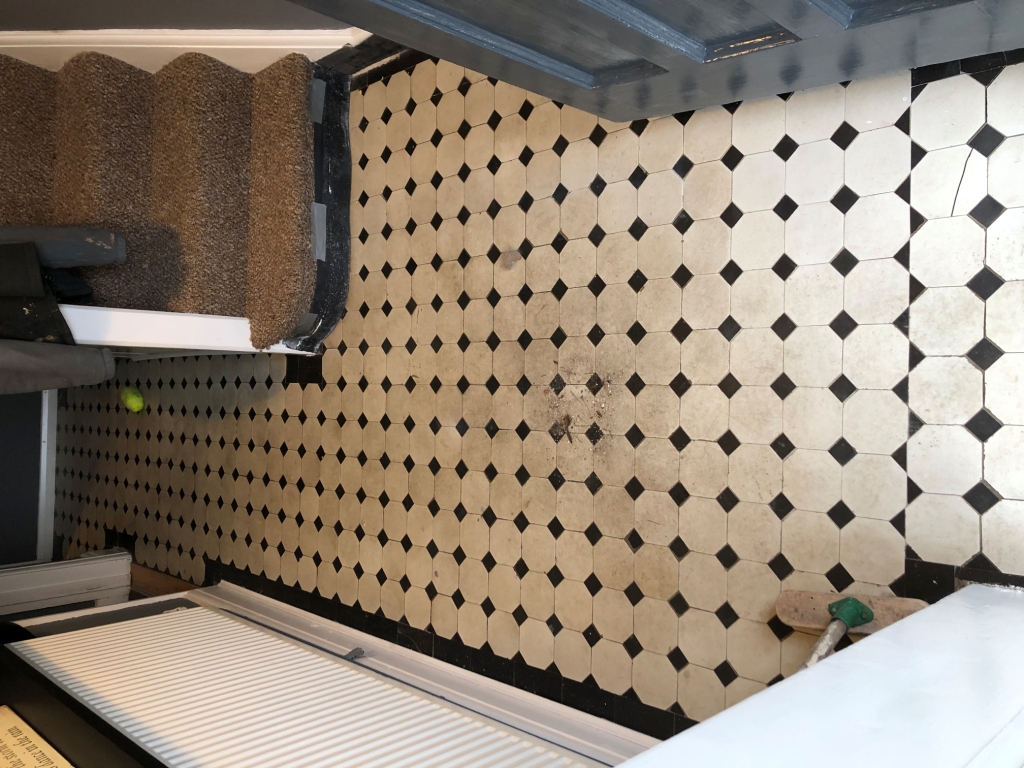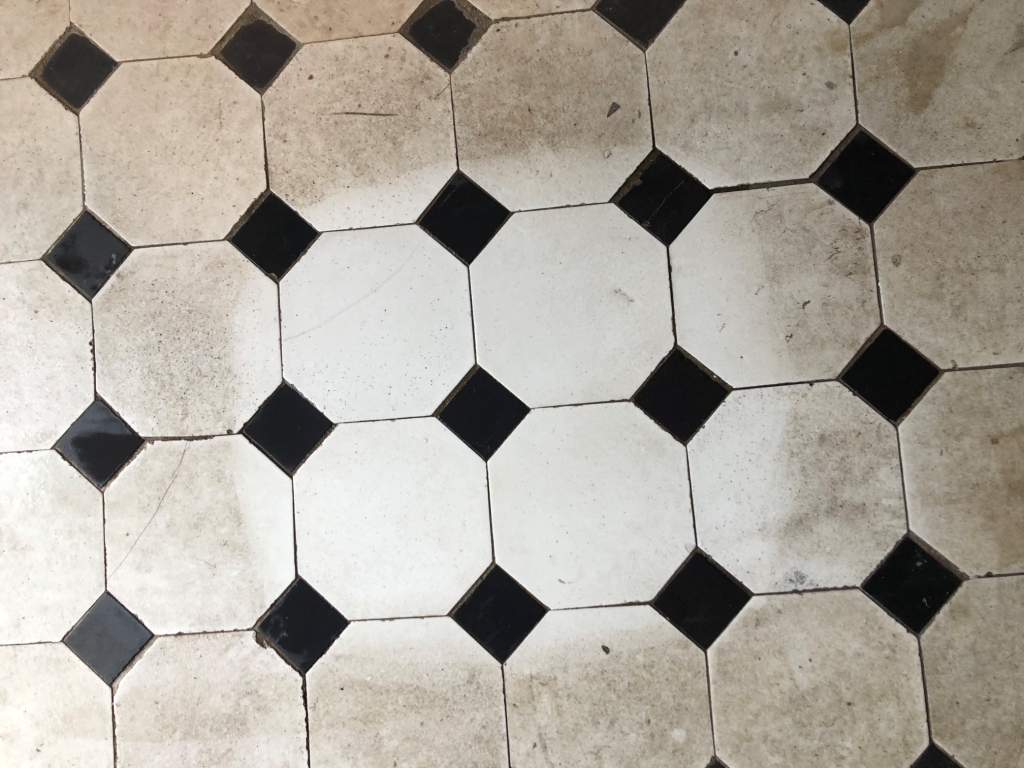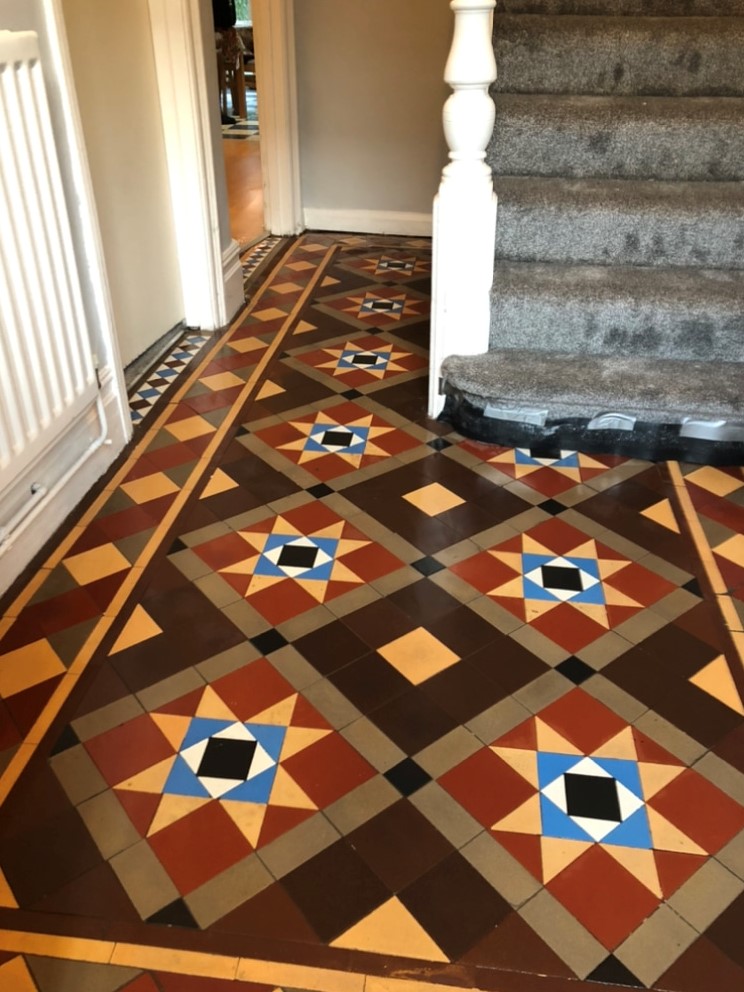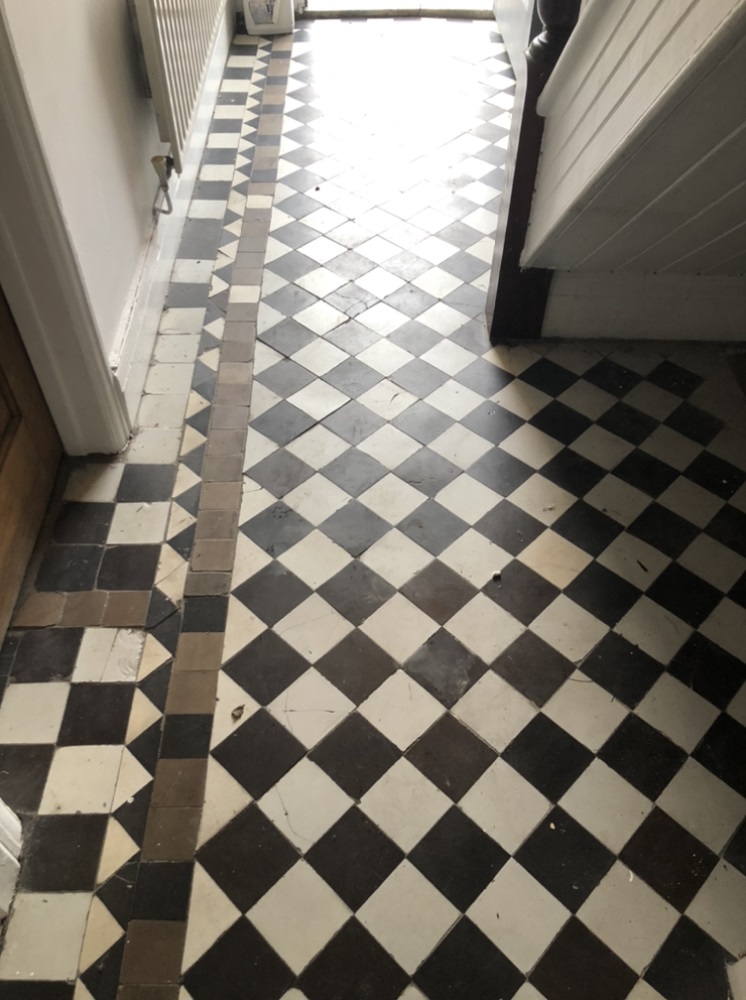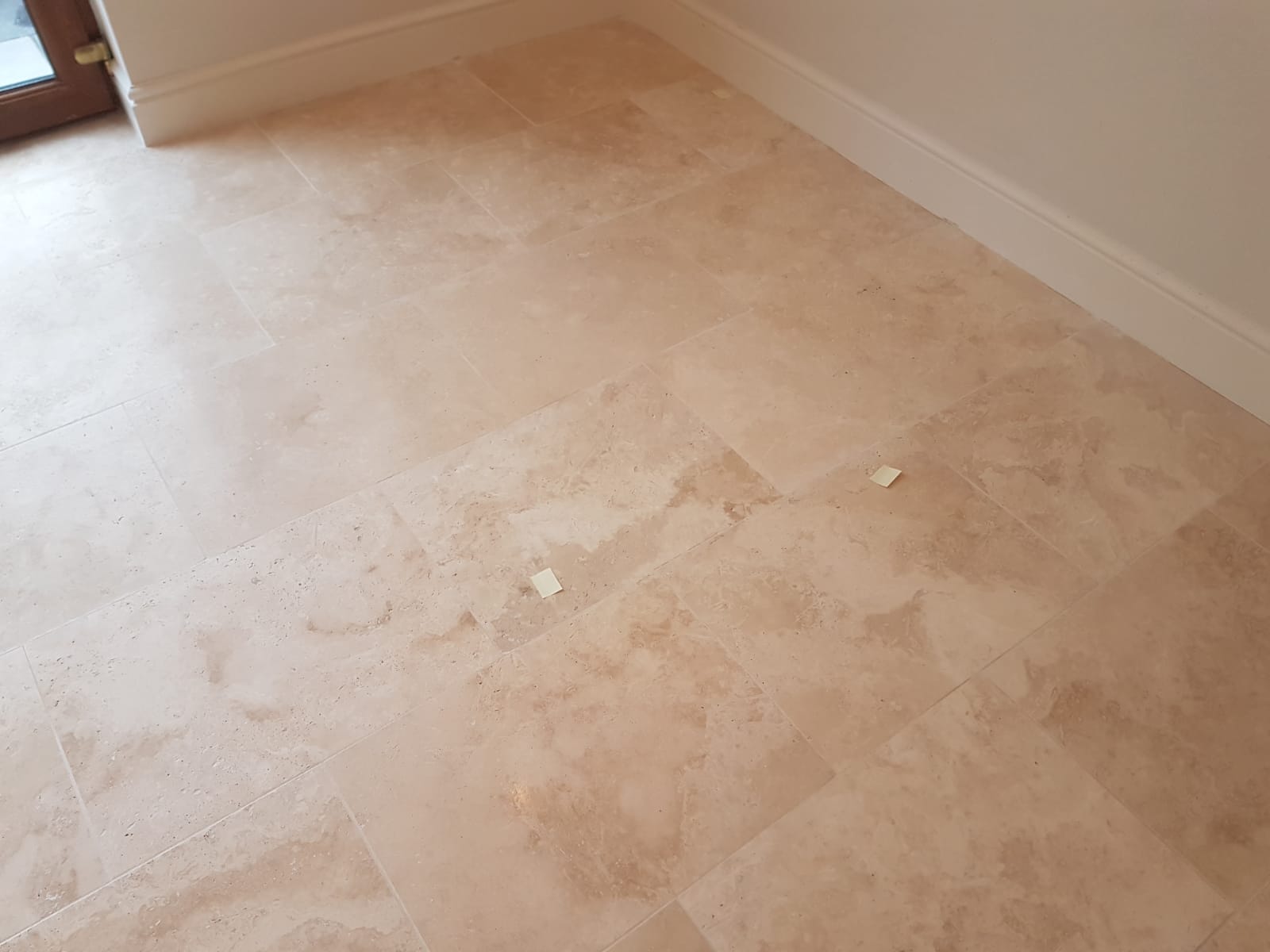Terrazzo Floor Discovered under Hallway Carpet Restored in Neath
A family in Neath, just outside Swansea, got in touch about a Terrazzo floor that they discovered when pulling up old carpet in the hallway. Having discussed the floor on the phone I arranged to the property to better understand its condition and provide a quote for its restoration.
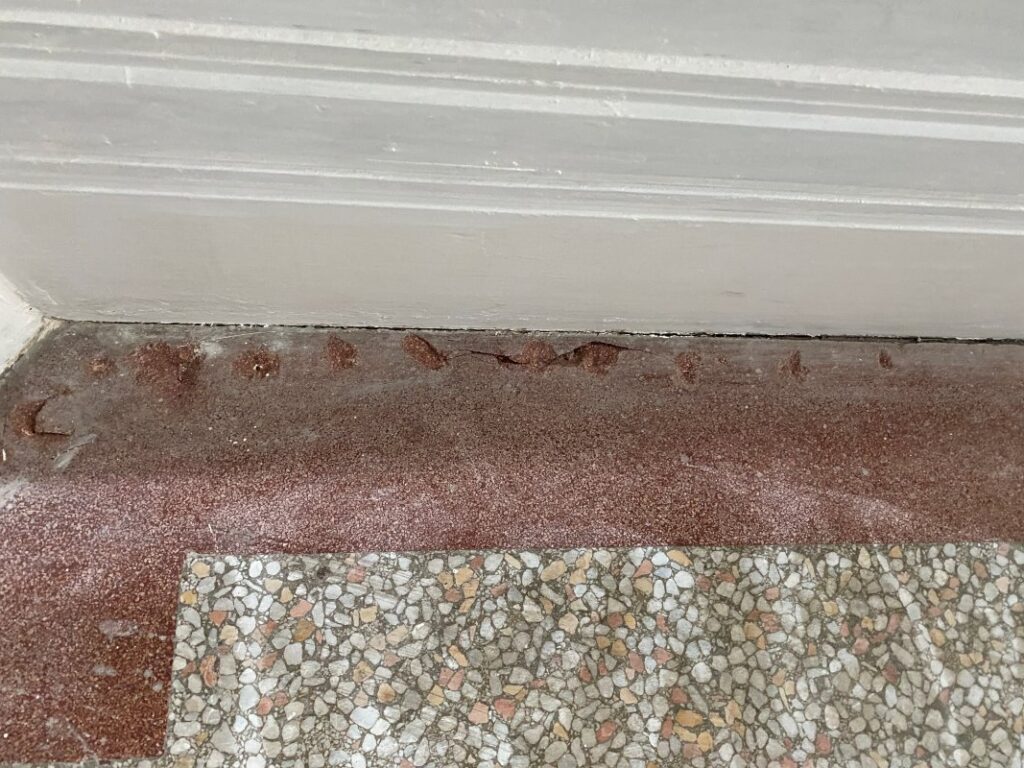
It was a beautifully large hallway, but having spent many years under carpet it was now in a very poor state. There was a lot of damage from nails from gripper rods and door strips being hammered in to the floor to secure the carpet. There were also multiple large cracks, missing stones and areas that had risen.
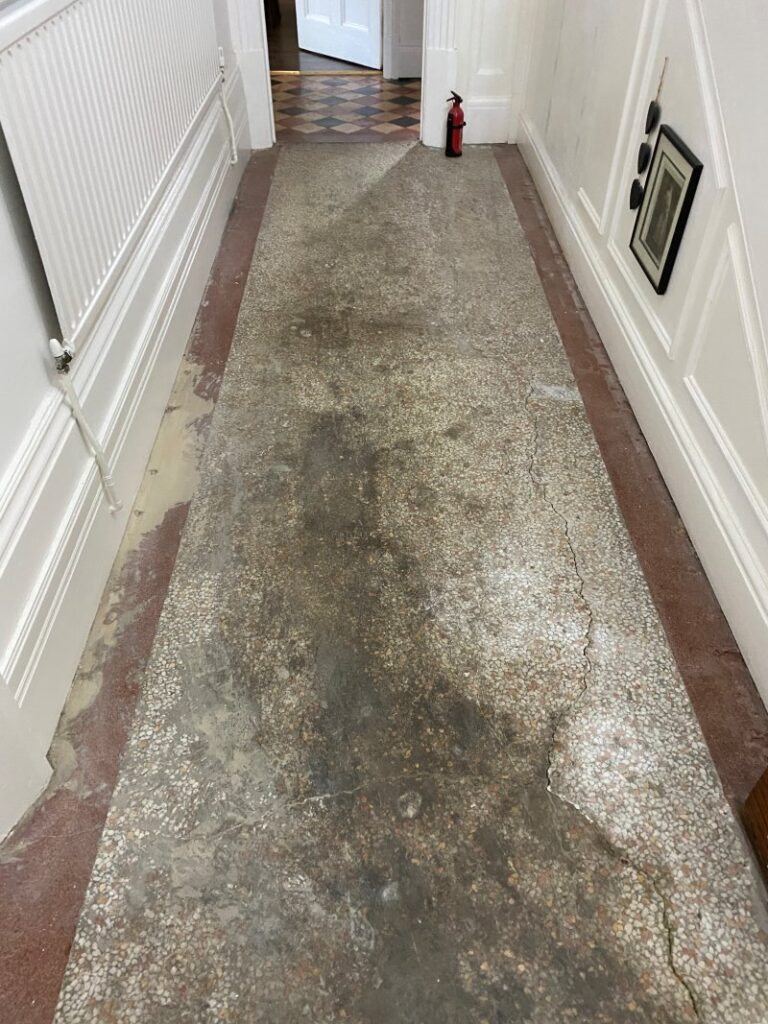 |
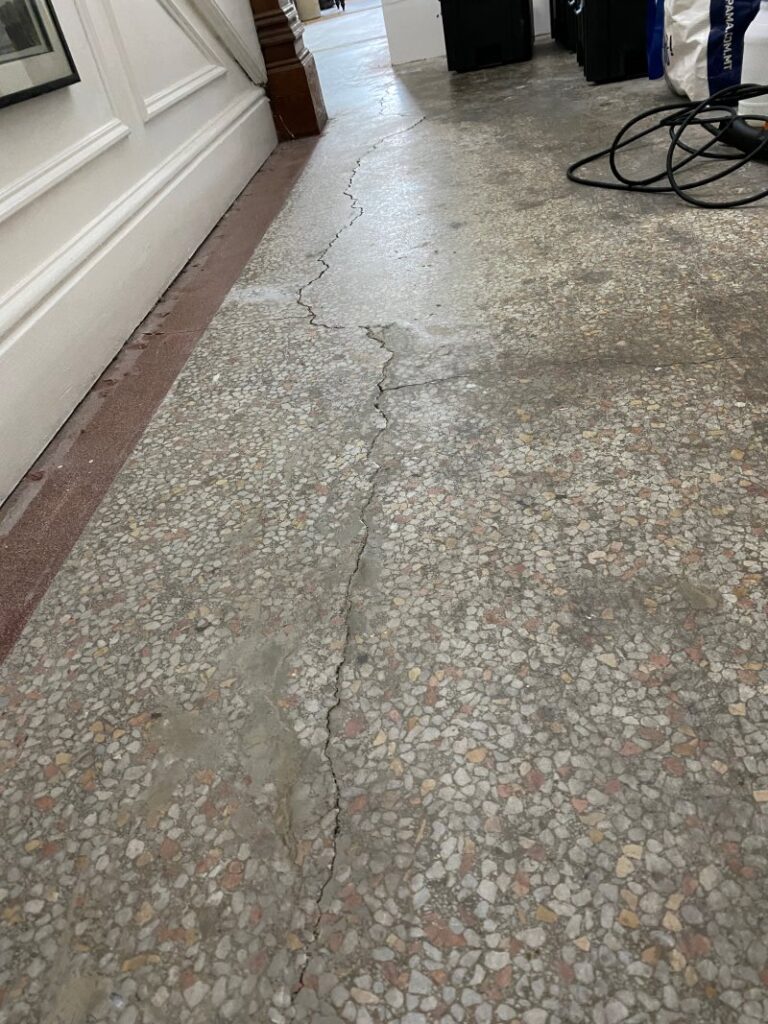 |
At some point in the past central heating pipes had been run across one section and then back filled with concrete. Multiple doorways had been all-but-destroyed by door strips and going into the other rooms entire quarry tiles were missing and smashed.
The family had taken on this charming house with the intention to maintain as many of the original features as possible, and upon discovering the floor hoped that it could be salvaged. Having discussed the work that was needed at length I worked out a quote for fully restoring the floor. Happy with the costs involved and keen to get it restored the quote was accepted.
Restoring a Terrazzo Floor in Neath
Work started with the repair work including the careful removal of concrete backfill using hand tools and a grinder. The rubble from this was cleared away and then the detailed repair work began using resin, tints and various stones to replicate the damaged and missing areas.
Terrazzo floors are made from stone chippings and in this floor, there was a lot of Marble content. Because of this we find the best way to renovate Terrazzo is to treat them like polished stone and hone them using a set of diamond burnishing pads. The pads come in a set from 400 to 3000 grit and are applied to the floor using a rotary floor buffer.
The first pad which is a coarse 400-grit that cuts through the grime and dirt. In this case I run it over the floor in combination with a strong dilution of Tile Doctor Pro-Clean which also adds lubrication. The process generates a lot of slurry which is rinsed off with water and extracted with a wet vacuum. The whole process was then repeated using an 800 and 1500-grit pad, only water was used with these pads and the floor was rinsed and extracted as before after each pad.
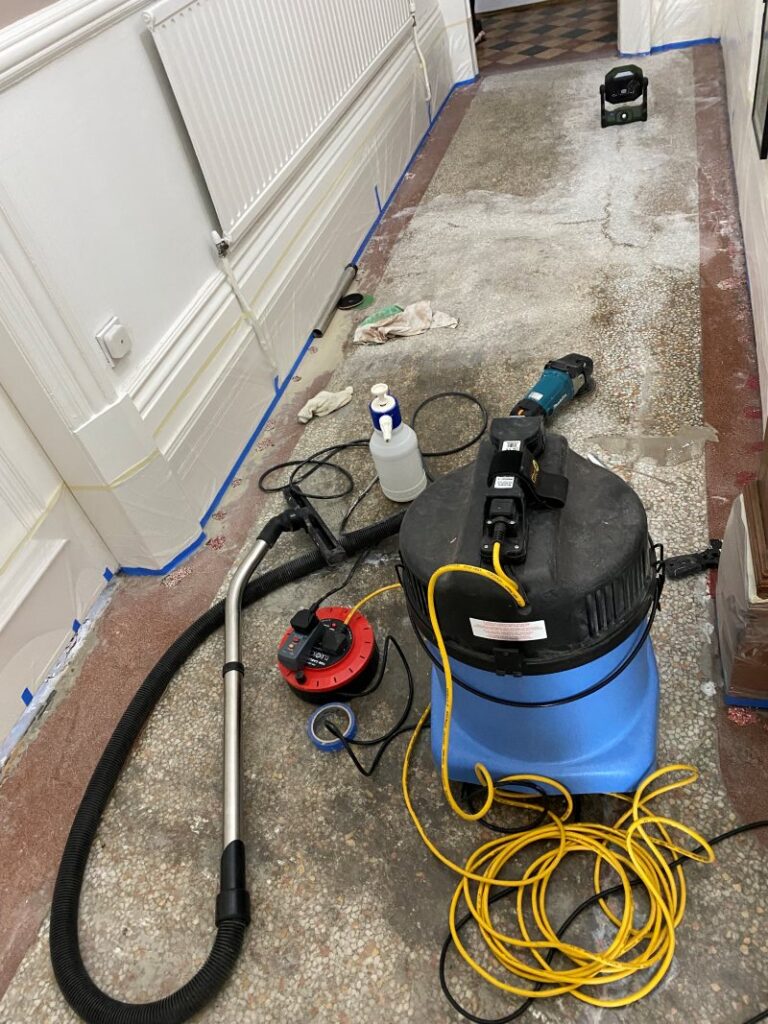 |
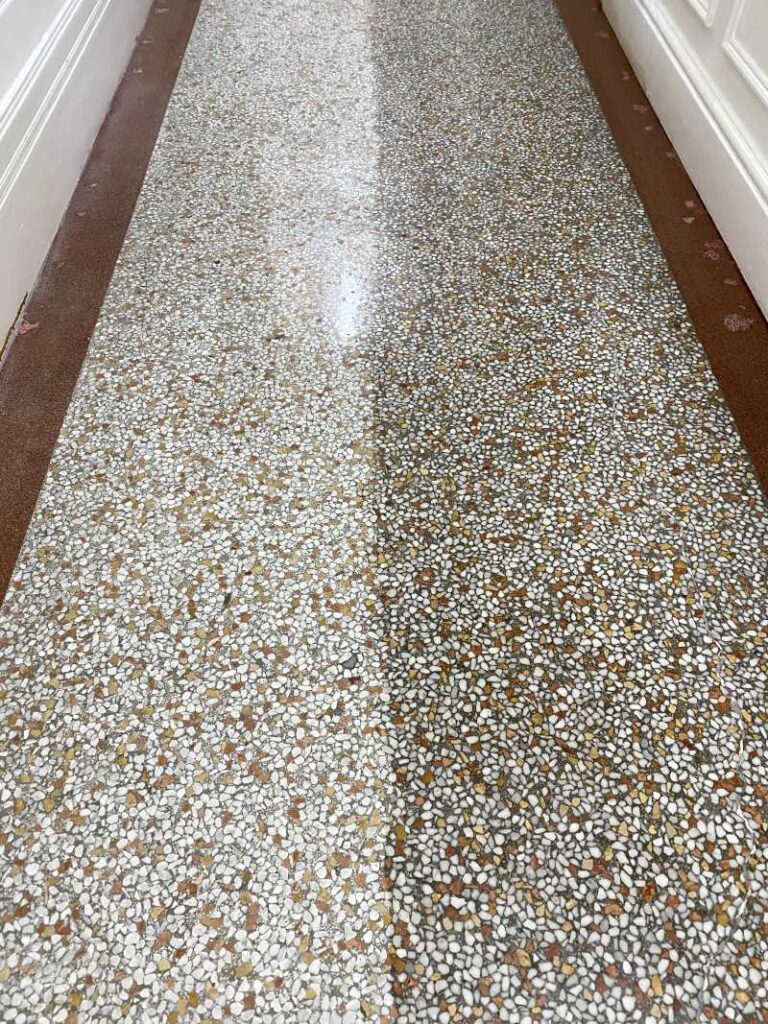 |
To further enhance the appearance of the floor and add a lovely durable shine, Tile Doctor Shine Powder was then ground into the floor using a White buffing pad
Sealing a Terrazzo Tiled Hallway
After allowing it to dry properly, the floor was sealed with multiple coats of Tile Doctor Colour Grow sealer. This is a colour enhancing impregnating sealer that soaks into the Terrazzo, occupying the pores and preventing dirt from residing there. This protection will ensure dirt remains on the surface where it can be easily cleaned away.
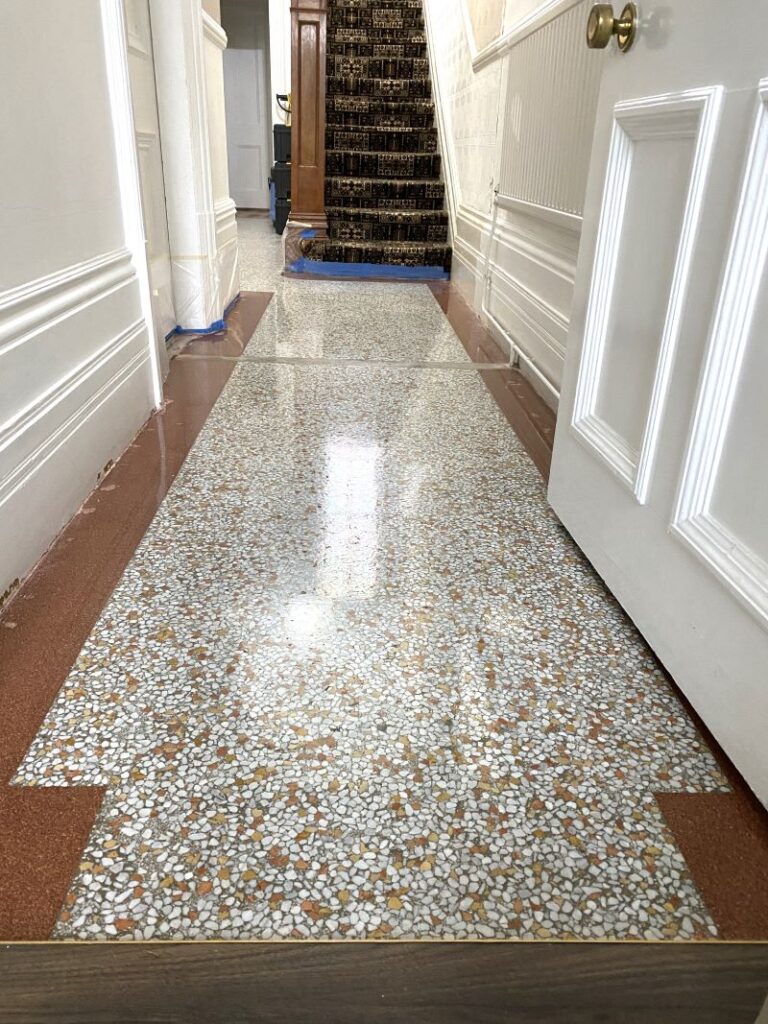
The floor responded very well to the treatments and the couple were delighted with their stunning floor. The work had transformed the hallway and given the Terrazzo a new lease of life that has enhanced their spectacular house.
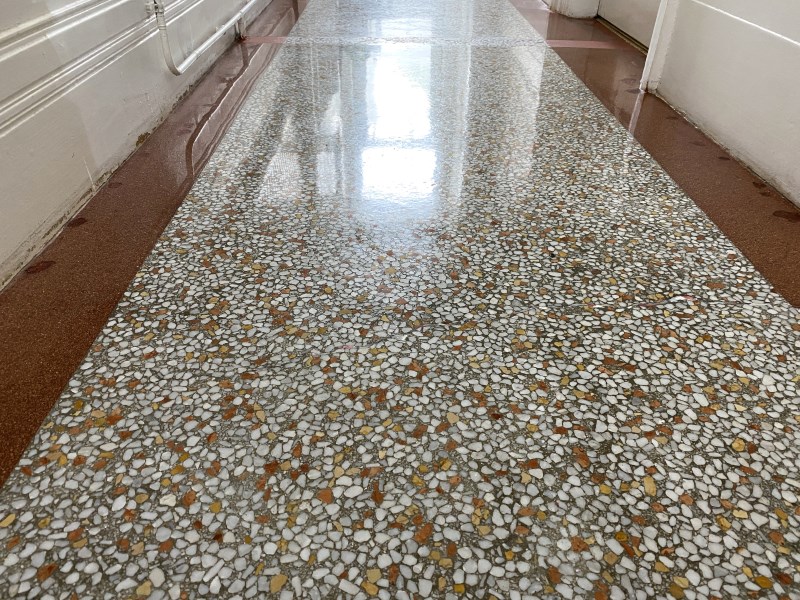
For aftercare on a floor like this I recommended using Tile Doctor Stone Soap which is a gentle yet effective neutral pH tile cleaner that contains a patina enhancer.
Professional Restoration of a Terrazzo Tiled Hallway in South Wales
Terrazzo Floor Discovered under Hallway Carpet Restored in Neath Read More »


